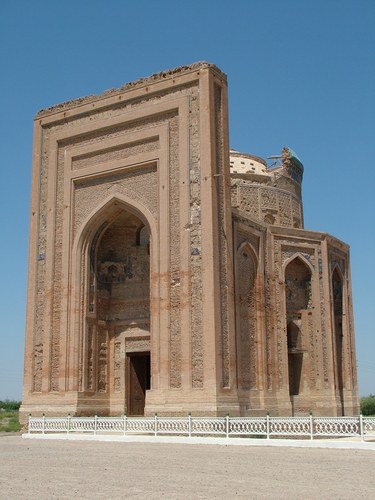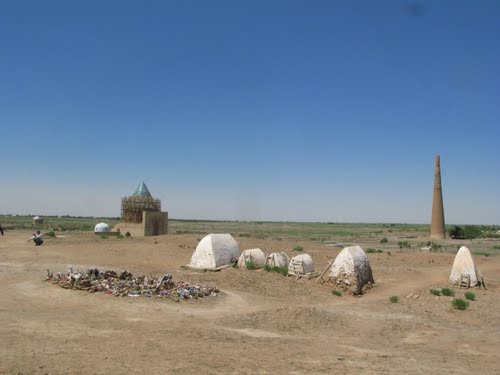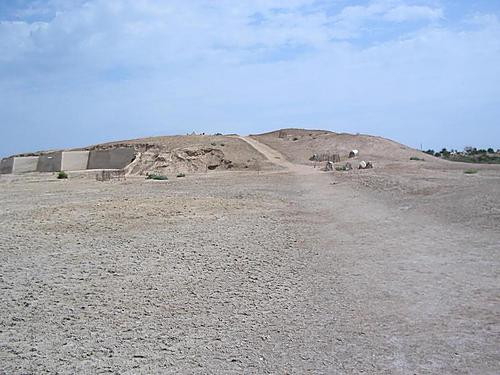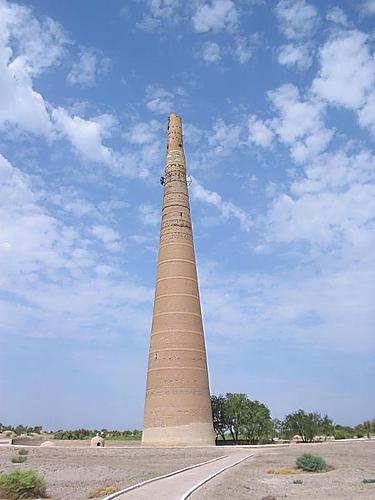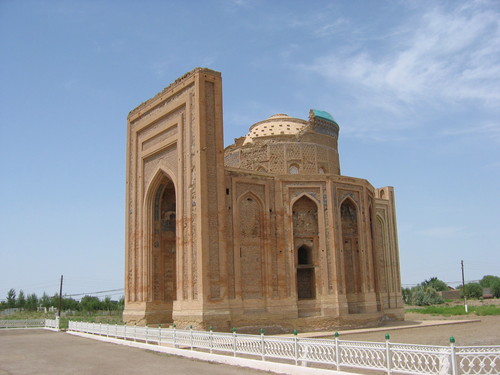Konye-Urgench, also known as Kunya-Urgench, Old Urgench or Urganj, is a municipality of about 30,000 inhabitants in north Turkmenistan, just south from its border with Uzbekistan. It is the site of the ancient town of Urgench, which contains the ruins of the capital of Khwarezm, a part of the Achaemenid Empire. Its inhabitants deserted the town three and a half centuries ago in order to develop a new settlement, and Kunya-Urgench has remained undisturbed ever since. In 2005, the ruins of Old Urgench were inscribed on the UNESCO List of World Heritage Sites.
History and development
The exact dates when Kunya-Urgench was founded remain uncertain, but archaeological finds at the Kyrkmolla Hill reveal that the town already had a strong structure in the 5th and 4th centuries BC. Some of the earliest records show that Khwarezm was invaded by the Arabs in 712, and Kunya-Urgench was given the Arabic name "Gurgandj". The city rose to prominence between the 10th and 14th centuries as the Khwarezmian capital, and as an important trading centre, competing in fame and population with many other Central Asian cities, such as Bukhara. It had become highly prosperous due to its strategic location on the main routes from the south to the north, and the west to the east, vastly contributing to the development of science and culture in Central Asia.
According to an 1893 writer Djordjania or Jorjania was the "second capital" of the country. It was on the Wadak canal which seems to be the east end of the Kunya-Darya which seems to be the river bed that now leads to the Sarykamysh Lake. Just east of the town was dam that irrigated the area and blocked the flow of the Oxus into the Caspian. In 1220 both town and dam were destroyed by the Mongols and the surrounding area became a marsh. Konya-Urgench was soon built on or near the site of Jorjania.
In 1221, Genghis Khan destroyed the city in the Mongol invasion of Central Asia, in what is considered to be one of the bloodiest massacres in human history. Despite the devastating effects of the invasion, the city was revived and it regained its previous status. It was described by the 14th-century Arabic traveller Ibn Battuta as "the largest, greatest, most beautiful and most important city of the Turks. It has fine bazaars and broad streets, a great number of buildings and abundance of commodities".
In 1373, Timur attacked Khwarezm, and its ruler Yusef Sufi of the Sufi Dynasty surrendered to Timur. In 1379, Yusef Sufi rebelled against Timur, who sacked Urgench and Yusef Sufi was killed. In 1388, the Sufi dynasty of Urgench again revolted against Timur, this time Timur razed Urgench to the ground and massacred its population, destroyed the city's irrigation system, leaving only one mosque standing and had barley planted over the ground where the city had once stood. This, coupled with the sudden change of the Amu-Darya River's course, constituted the beginning of Kunya-Urgench's decline until the 16th century, when it was replaced as a regional capital by Khiva and was ultimately abandoned.
The area was later inhabited by the Turkmen people from the early 19th century, but they mostly developed outside the old town, utilising the latter as a graveyard. However, this use has now stopped, and efforts have been made to remove the decaying grave stones that can be encountered at the site.
The new town of Urgench was developed to the southeast, in present-day Uzbekistan.

